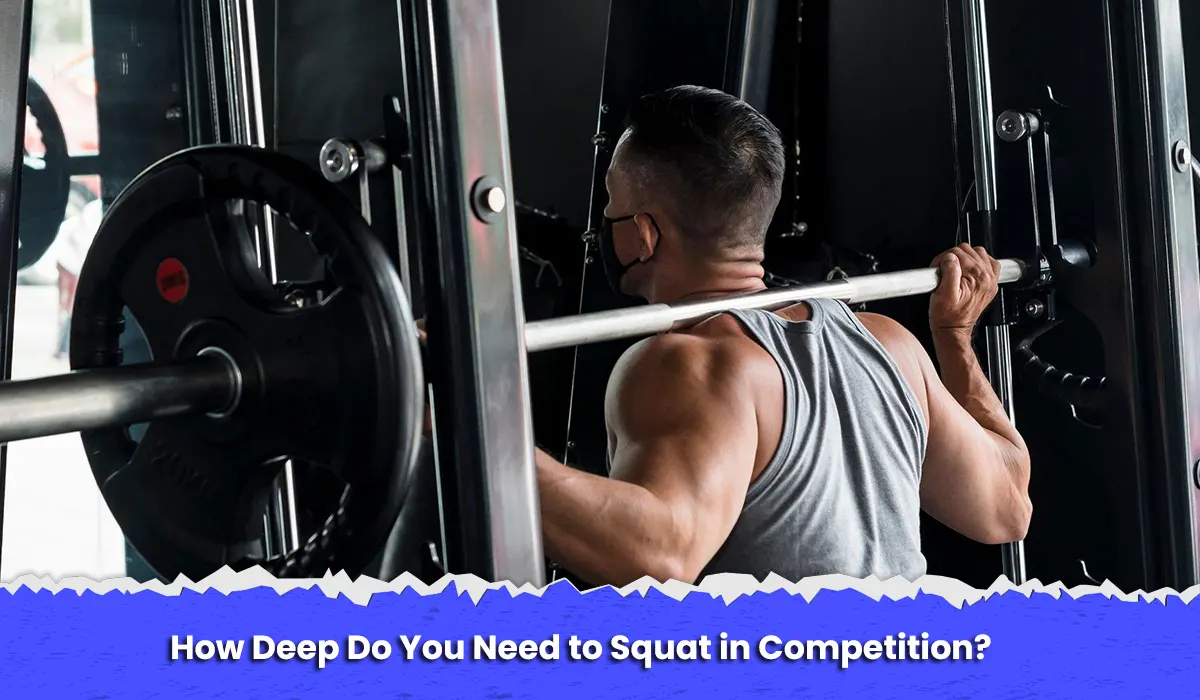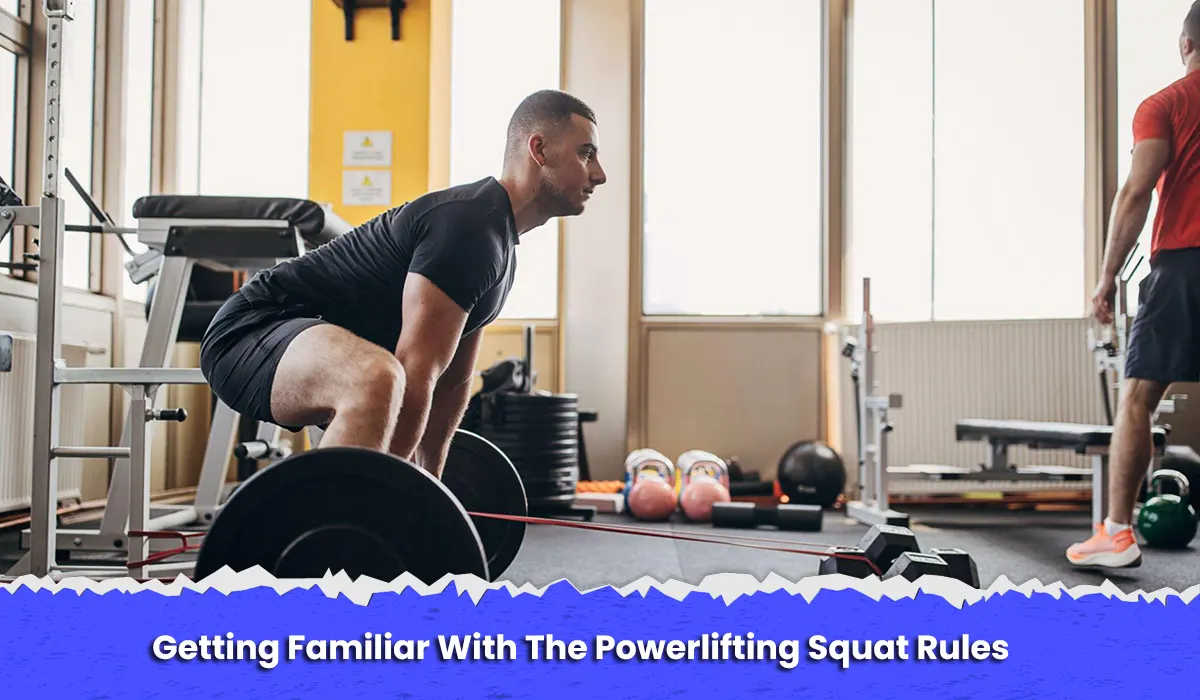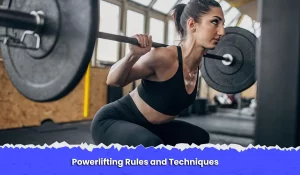When I first start coaching a novice powerlifter in the squat, my primary concern is how their technique connects to the squat rules they’ll face in competition. The last thing you want to do is train incredibly hard for several months, only to fail a squat in competition because you didn’t know the regulations or didn’t practice them enough.
So, what are the laws of powerlifting squat technique? Regardless of the powerlifting federation, you must squat to a minimum depth, demonstrate control at both the beginning and end by locking your knees, maintain your balance, and have continual forward motion of the barbell (no dipping or bouncing).
However, there are a few more rules you need be aware of in order to pass a squat in competition.
The Squat Technique Rules For Powerlifting
You can compete in powerlifting through one of several powerlifting federations. Each powerlifting association will have its own set of squat regulations and criteria. Most adhere to the same broad principles (for example, squatting to a particular depth), but each federation interprets the rules differently (for example, what ‘depth’ is deep enough to pass). As a result, I strongly advise you to research the rules of the powerlifting federation with which you intend to compete.
Having stated that, the International Powerlifting Federation is the most popular powerlifting federation proviron dosage among athletes (IPF). It is the world’s largest powerlifting organization, with over 100 affiliate nations. The International World Games Committee, an affiliate of the International Olympic Committee, is also affiliated with the IPF.
Know More About Turinabol Benefits
The IPF rulebook specifies six guidelines for the powerlifting squat:
- Bend your knees and lower your torso until the top of your leg (upper quad at the hip joint) is lower than the top of your knee (explained in more detail below)
- Your knees must be locked at both the start and end of the exercise.
- You can’t move your feet laterally or forward or backward when squatting because you’ll lose your equilibrium.
- You must pay attention to the referee’s indications (explained in more detail below)
- You cannot intentionally support the movement by touching your elbows or arms with your knees.
- You can’t ‘double bounce’ at the bottom (go up, winstrol pills down, then up again), nor can the bar move downward.
The IPF rules also specifies what you may and may not wear during competition. Certain brands and models of equipment are permitted.
Many competitors choose to employ the thumbless grip squat, which is legal in powerlifting as long as each finger touches the barbell.
How Deep Do You Need to Squat in Competition?

The most disputed rule in the powerlifting squat is the depth requirement. How deep is too deep?
Remember, the upper surface of the leg must be lower than the top of the knee. Every lifter, coach, and referee will have a different interpretation. However, the officials in powerlifting will ultimately judge if you’re deep enough. There are three referees on the platform who will enforce the rules, and you must have the approval of at least two-thirds of the referees.
It can be difficult to detect whether the top of the leg went below the top of the knee depending on where the referees are positioned (front or side) or the angle from which they are observing (higher or lower). It gets increasingly difficult to tell whether depth was accomplished depending on the lifter’s tempo (how quickly the lifter squats down) and how close the lifter is attempting to cut depth (the idea that you don’t want to squat ‘too deep,’ as this would make the movement tougher).
Here are some tips to ensure you reach competition depth and the referees pass your lift:
- Make certain that you are continuously training deeply. It will not come together in the competition if you are not consistent in your training.
- Take footage of your squat workout on a regular basis. The visual input will be critical in determining which reps were higher than others.
- Surround yourself with a coach or training partner who can accurately assess your depth in accordance with the regulations. People providing you feedback should 1) be honest and not be scared to call you out if you’re high, and 2) understand the rules so they don’t arbitrarily declare reps are deep when they aren’t.
- Improve your ankle and hip mobility so you don’t have any problems reaching the deeper end of a squat.
- For novice powerlifters, go to a’safe depth.’ This is described as squatting deeper than necessary in order to leave no mistake in the minds of the referees. Over time, you can work on ‘reducing your depth’ to lower the overall range of motion.
When it comes to squats, Olympic weightlifters and powerlifters have slightly different rules. Check out my other article where I compare these various squat styles.
Show the Real Power of Primobolan Depot
What Are The Powerlifting Squat Commands?
Being able to obey the referees’ orders is one of the most crucial squat technique principles.
The referee commands indicate the start and end of the maneuver. You cannot begin the action or rack the bar until you have received the referee’s directions.
To begin the squat:
Take the bar off the rack and step back into your squat posture for squats. You must, however, maintain that stance with your knees locked until the referee deems you have control of the barbell. The referee will then pronounce “SQUAT,” indicating that you can begin to bend your knees and do the exercise.
To finish the squat:
When you reach the required depth and stand back up, the referee will look for your knees to be locked, precisely as they were in the starting position. They will say “RACK” once they have attained that rank. This indication indicates that you can return the weight to the rack.
If you do not begin and end the movement on the referee commands, such as squatting before the “SQUAT” command or racking the weight before the “RACK” command, the lift is immediately over and you will not pass.
My most important piece of advice for someone just starting out is to have a coach or training partner give you the “SQUAT” and “RACK” orders in training. You must train yourself to hold the bar for a few seconds longer at the start and finish of each movement. Most folks do not have this extra time.
Getting Familiar With The Powerlifting Squat Rules

There are two important approaches to squat technique:
- Concentrate on squat technique to help you get stronger.
- Concentrate on squat technique so that you can pass your lifts in competition.
Because you must be both strong and technical, neither of these should be preferred over the other. If you can squat a lot of weight but can’t pass that lift in competition, the load on the bar is meaningless.
As a result, every aspiring or competitive powerlifter should begin by optimizing their squat technique for competition. If you adopt this mindset, you will better comprehend the squat rules and be able to pass more lifts in competition.
The ultimate goal of a powerlifter is to pass lifts in competition.
Show the Real Power of Primobolan Depot
Final Thoughts
Knowing the powerlifting squat guidelines will assist you in passing your lifts in a competitive setting. Having an honest instructor and training partner who can monitor your depth and give you directions will help you improve your powerlifting squat technique.


